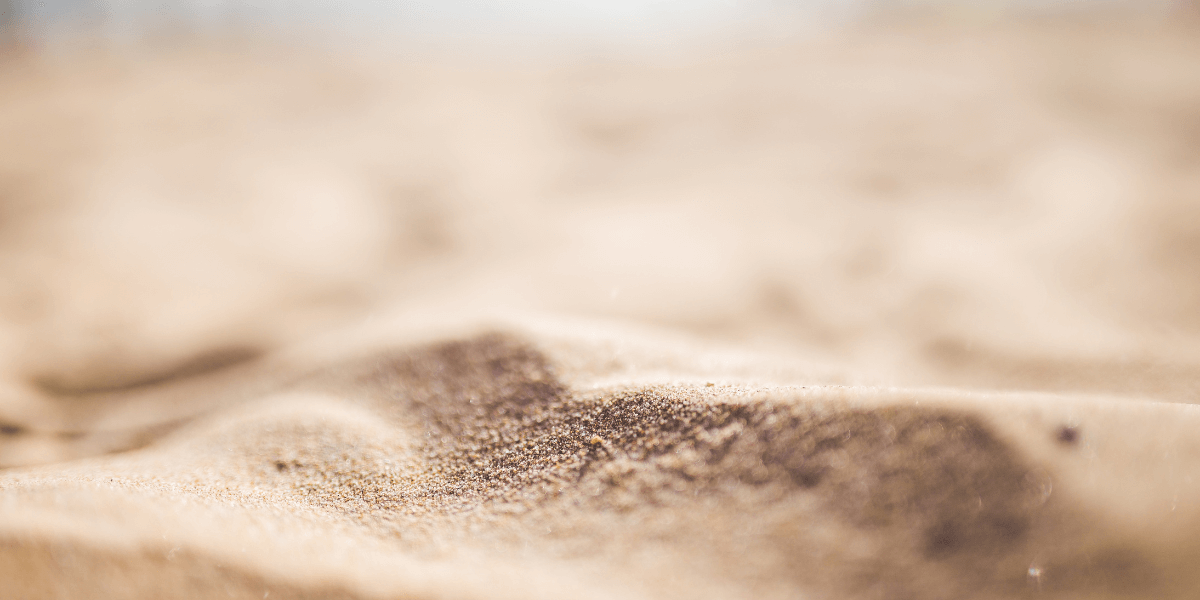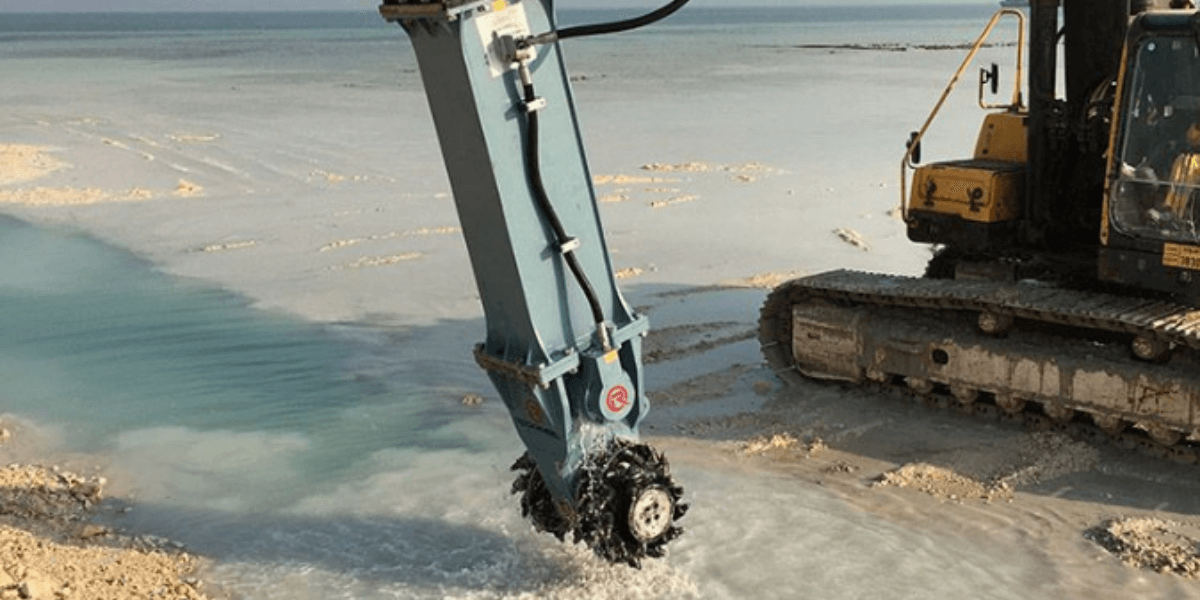How to Compact Sand: A Complete Guide for DIYers & Pros

Compacting sand seems simple, but mistakes lead to uneven surfaces, shifting pavers, and weak foundations. So, how to compact sand correctly?
It takes the right moisture content, compaction force, and equipment. Too dry, and soil particles stay loose. Too much moisture and the material turns to mush.
Many think stomping in one spot or using a hand tamper is enough, but sand needs vibration for proper compaction. A plate compactor, jumping jack, or the right mechanical compaction method makes all the difference.
From bedding sand for pavers to prepping a job site for rock excavation, this guide covers the best tools, methods, and common mistakes—so your surface stays solid.
Key Takeaways
- Sand needs moisture, pressure, and the right equipment to stay put.
- A plate compactor is great, but bigger jobs may need heavier tools.
- If your footprints sink too deep, compact it again.
The Science Behind Sand Compaction: Why Sand Won’t Stay Put

Ever tried leveling sand for a construction project only to watch it shift underfoot? That’s because sand behaves differently from other soil types.
Unlike cohesive soils like clay, which naturally bind together, granular soils like sand are loose and unstable until properly compacted. Without the right moisture content, compaction force, and equipment, sand stays soft and unpredictable.
Vibration is key. When sand is compacted, its soil particles shift closer together, reducing air gaps and creating a firm surface that can handle weight without shifting. A plate compactor, jumping jack, or even a hand tamp can help, but the right method depends on the material and depth of the project.
Water helps, but too much moisture can cause sand to lose stability. A quick squeeze test can tell you if it’s ready—if it crumbles, it’s too dry; if it drips, it’s too wet. Once the moisture is right, the next step is choosing the best compactor for the job.
How to Compact Sand Without a Compactor (DIY & Budget-Friendly Methods)
Not everyone has a plate compactor sitting in their garage, but that doesn’t mean you can’t achieve proper compaction using simple techniques.
If you're working in tight spots or on a small project, these DIY methods can help create a stable surface without heavy compaction equipment.
The water trick: Water helps sand settle by filling the gaps between granular materials. Instead of dumping a bucket of water all at once, sprinkle it gradually across the area. The dirt will absorb the moisture and allow the soil particles to shift and settle naturally.
Too much water, though, and you’ll have to wait for it to dry before continuing.
Hand-tamping techniques: A hand tamper is a simple tool with a flat, heavy plate at the bottom. Using steady, even pressure, press down on the ground to pack the sand into a firm layer.
This method works best for smaller areas where using a compactor isn’t practical. It takes more force and patience, but it gets the job done.
The lawn roller method: Filling a roller with water increases its weight, making it an effective way to compact sand. Roll it back and forth over the material, applying steady pressure.
This technique is great for larger areas that need even density but don’t require the power of a machine.
The “walking and dancing” technique: For the simplest (and most entertaining) method, just walk across the sand repeatedly. Shuffling your feet or doing a little dance helps pack down the compacted soil, especially in small, tight spots where a machine can’t reach.
It’s not the most efficient approach, but it’s fun and surprisingly effective for minor compaction needs.
Pro tip: When to avoid compacting sand without a machine
DIY methods work for small projects, but if you're dealing with deep trenches, a large construction project, or areas requiring high density, using the right equipment is the best way to get long-lasting results.
If your footprints still sink too deep after compacting, it might be time to bring in a compactor.
How to Compact Sand with a Plate Compactor (Best for Larger Projects)
For bigger projects, using a plate compactor is the most efficient way to achieve proper compaction.
Unlike DIY methods, a machine applies consistent force and vibration, helping granular soils settle evenly. This method is ideal for preparing foundations, leveling sand for concrete, or compacting dirt in trenches and large areas.
Step-by-step guide
- Choose the right plate compactor: A vibratory plate compactor is ideal for granular materials like sand and gravel since its vibration helps pack particles tightly, increasing density. If the project requires deeper compaction, a reversible plate compactor offers better control, especially in tight spots or areas with uneven depth.
- Spread the sand evenly: Use a rake or shovel to distribute the material into a uniform layer across the ground. Uneven spreading can lead to inconsistent compaction, creating weak spots that may cause shifting later.
- Pre-wet the sand: Lightly spray the sand with water to improve compaction. The added moisture helps settle the soil particles and prevents excessive shifting under the compactor. Be careful not to add too much water, as wet sand can become too soft and lose stability.
- Make multiple passes: Turn on the plate compactor and move it slowly across the surface, overlapping each pass by a few inches. This ensures the force is distributed evenly and prevents loose areas that could compromise the density of the compacted soil.
- Check for even compaction: Walk across the area and look for footprints or shifting ground. If the layer still feels loose or unstable, repeat the process until the compaction is firm and the soil can support weight without movement.
Common mistakes to avoid
- Moving too fast or too slow: Rushing can leave gaps in compaction, while going too slow may cause the machine to sink into the material. Maintain a steady pace for the best results.
- Overcompacting the sand: Applying more force than necessary can make the layer too rigid, reducing flexibility for pavers or concrete.
- Skipping moisture control: Dry granular soils don’t compact well, and too much moisture can lead to instability. Finding the right balance is key.
Special Case: Compacting Polymeric Sand for Pavers
Polymeric sand contains binding agents that harden when wet, locking pavers in place. Without proper compaction, gaps and weak spots can form, leading to shifting and erosion over time. Using a vibratory plate compactor helps press the granular materials deep into the joints, preventing hollow joints that may wash out later.
To avoid damaging pavers, place a rubber mat or thick fabric under the plate compactor before running it over the surface. This cushions the force needed for proper compaction without scratching or chipping the pavers.
Once the sand is set, mist the surface lightly with water to activate the binding agents. Adding too much water too quickly can wash away the material, so spray in light passes and allow the sand to absorb the moisture gradually. Once dry, the compacted soil between the pavers will be firm, preventing movement and erosion.
When a Plate Compactor Isn’t Enough

Some projects need more than a plate compactor. If you're compacting deep layers of sand, preparing foundations, or working on large sites, equipment like jumping jack rammers, vibratory rollers, and rock grinders provide the extra power needed for solid, long-lasting results.
Jumping jack rammers for tight spaces: A jumping jack rammer is best for cohesive soils like clay, where high-impact force increases cohesive strength.
These machines are ideal for trenches and narrow areas where a plate compactor can't fit. Their vertical motion drives soil particles together, making them effective for compacting in tight spots.
Vibratory rollers for large, open areas: For granular materials like sand and gravel, a vibratory roller is the better choice.
Unlike rammers, rollers use steady force and vibration to compact large surfaces efficiently. This makes them ideal for concrete prep, roadbeds, and other large-scale projects where consistency is key.
Compacting deep layers of sand: When working with sand layers thicker than six inches, a plate compactor may not provide enough pressure to reach the lower levels.
A roller or trench compactor applies greater force that helps create an even, stable foundation without trapping air pockets.
Rock grinders for tough job sites: On sites with mixed materials like gravel and compacted rock, rock grinders help break down oversized pieces, creating a smoother base for compaction. This is especially useful in trenches or areas needing precise leveling before structures are built.
RockZone Americas: Smarter Solutions for Sand Compaction
Standard compaction equipment works for small jobs, but deep layers, tough soil, and mixed materials need more power. That’s where RockZone Americas comes in.
With advanced attachments like Rockwheels, Rockscreeners, and RockCutters, RockZone makes compaction faster and more effective.
A plate compactor may struggle with cohesive soils, uneven gravel, or hard-to-reach areas. RockWheels cut through dense layers, RockScreeners filter out oversized particles, and RockCutters create clean trenches for foundations and structures. These tools simplify the process, helping you achieve stable, long-lasting results.
Get the right equipment for the job
For over 50 years, RockZone Americas has provided high-performance tools for construction, mining, and landscaping. Available for purchase or rental, our durable attachments help you tackle any compaction challenge. Contact RockZone Americas today to find the perfect solution for your project.
Conclusion
Compacting sand the normal way—a quick stomp or a single pass with a compactor—won’t always cut it.
Moisture, pressure, and the right compaction equipment all work together to create a solid base that won’t shift over time. Skipping steps or rushing the process can lead to uneven surfaces, cracks in concrete, and weak structures.
For bigger jobs, investing in the right tools makes a difference. RockZone Americas offers attachments that break through tough soil, cut clean trenches, and prepare surfaces for long-term stability. When the goal is compacted soil that lasts, precision matters.
Frequently Asked Questions
What is the best method for compacting sand?
The best way to compact sand is with a plate compactor or vibratory roller. These machines use vibration to settle the soil, remove air pockets, and create a dense, stable surface.
Adding the right amount of moisture before compacting helps the process by allowing the sand particles to shift and lock together more effectively.
How do you manually compact sand?
For small areas, a hand tamper or even your own body weight can help compact sand.
Pressing down with a heavy plate, stomping, or using a lawn roller filled with water can create a firmer base. Adding a light mist of water and repeating the process a few times helps improve compaction without the need for heavy equipment.
What is the cheapest way to compact sand?
The most budget-friendly way to compact sand is by using what you already have—your feet. Walking, shuffling, or even dancing across the sand repeatedly helps pack it down.
A lawn roller or a simple hand tamper adds more force without the cost of renting a compactor, and a garden hose makes for an easy moisture control tool.
